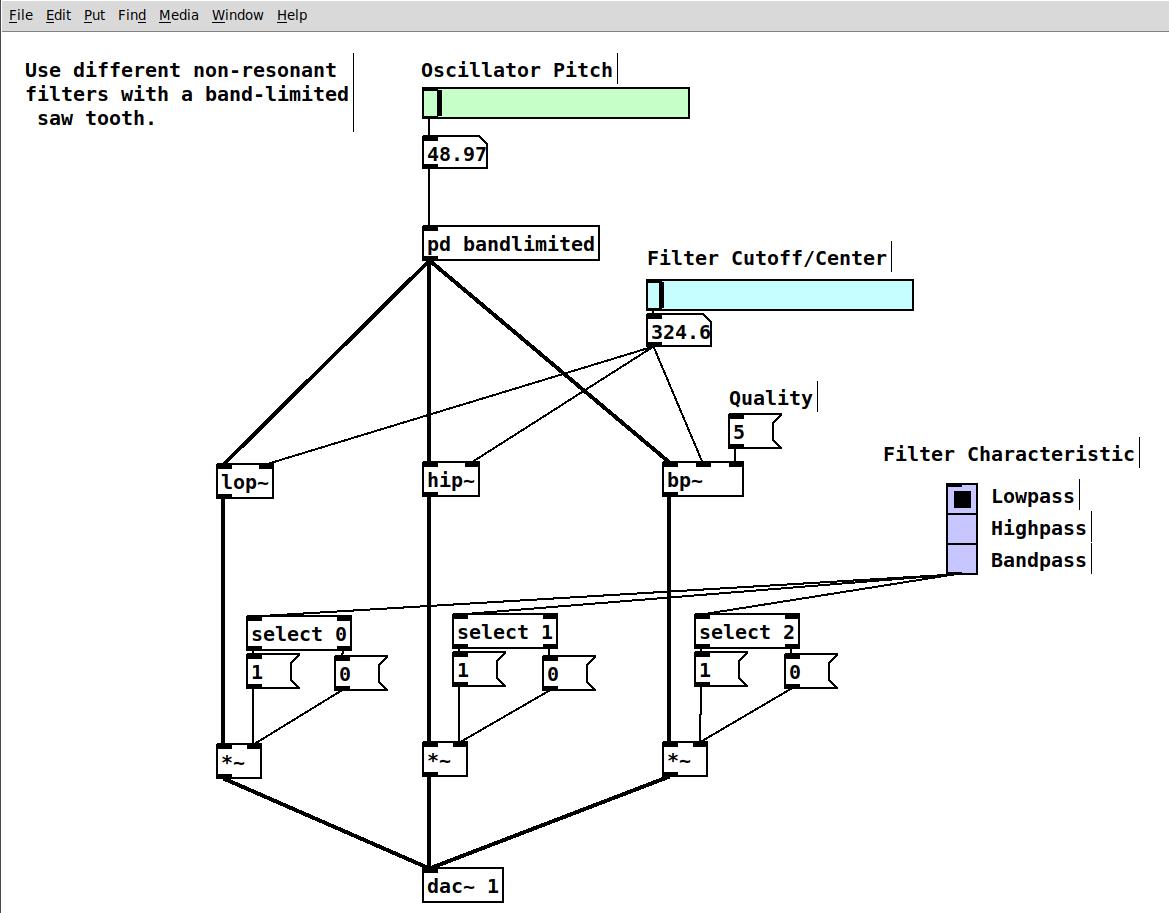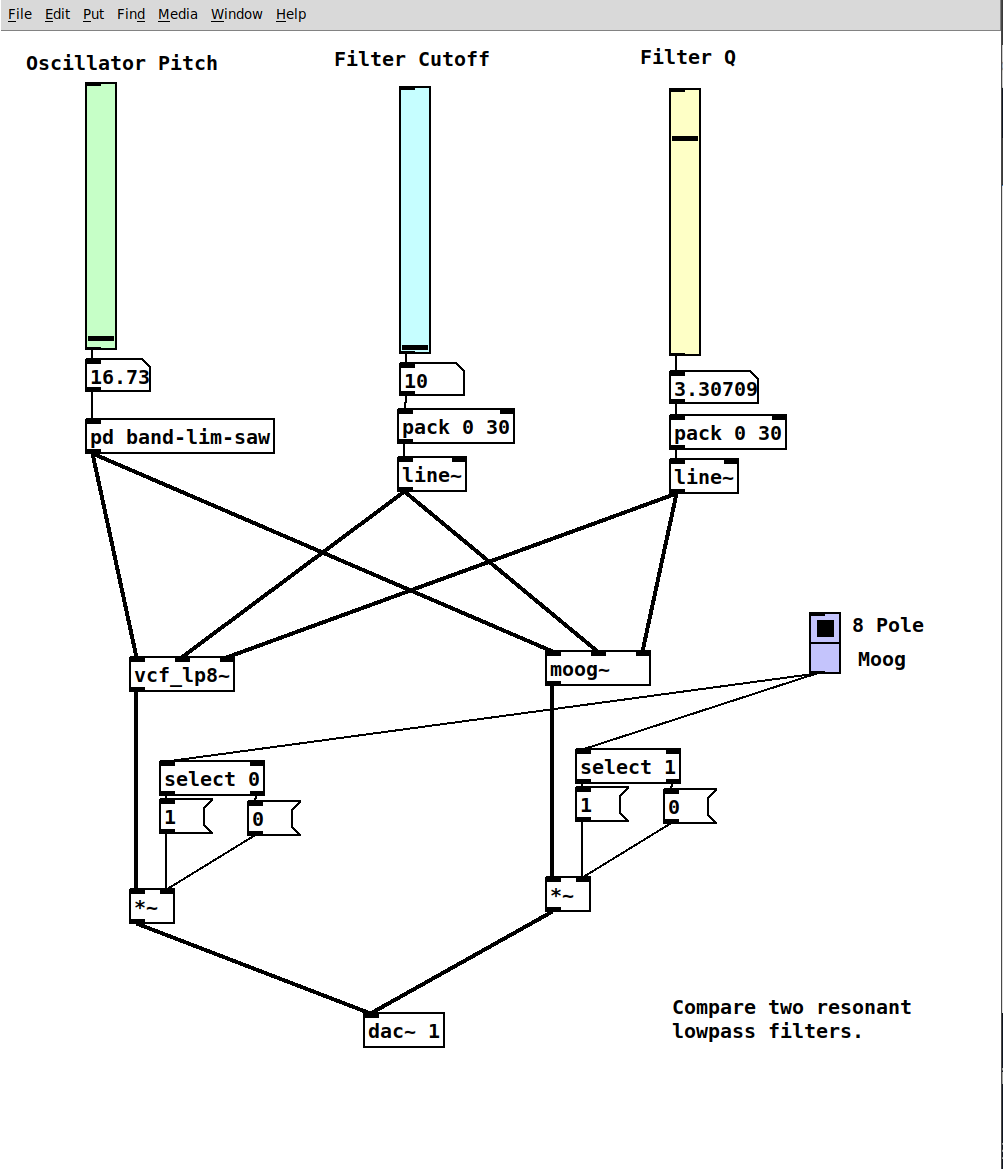Filters in PD
Filters are an essential, sound-defining component within subtractive synthesis. Especially in analog hardware, filters of specific instruments, like the TB 303 or the Minimoog, make the individual - almost legendary - sound qualities. It thus makes sense to look for different filter implementations in software, since they can improve the overall sound a lot. PD offers a couple of builtin filters but additional externals come with more elaborate implementations.
"User-Friendly" Filters
lop~, hip~ and bp~ are the basic non-resonant filters in PD.
The PD Floss Manuals on filters give a nice introduction to
these builtin one-pole filters. The PD help files also come with examples.
Due to the lacking resonance, these filters are not the most interesting ones, musically.
They are also called "user-friendly", since they can not become unstable.
With the example one-pole-filters.pd from the repository, different characteristics of the one-pole filters can be compared, using a band-limited sawtooth as input signal. Filter cutoff and quality are controlled with control rate signals:

Resonant Lowpass Filters
Additional filters can be implemented or installed with Deken.
Filters and the relevant extensions can be found in the list of external filters .
The iemlib, for example, features many useful resonant filters. One is the 8th order resonant lowpass vcf_lp8~.
The moog~ filter object from the flatspace ggee library is another good sounding implementation,
trying to emulate the famous Moog Ladder sound.
The example resonant-lowpass.pd
compares the sound of these filters with a square wave input.
For both implementations, all parameters are controlled with audio rate signals.
The slider values are thus converted to signals with the line~ object,
which is basically a linear interpolation.

